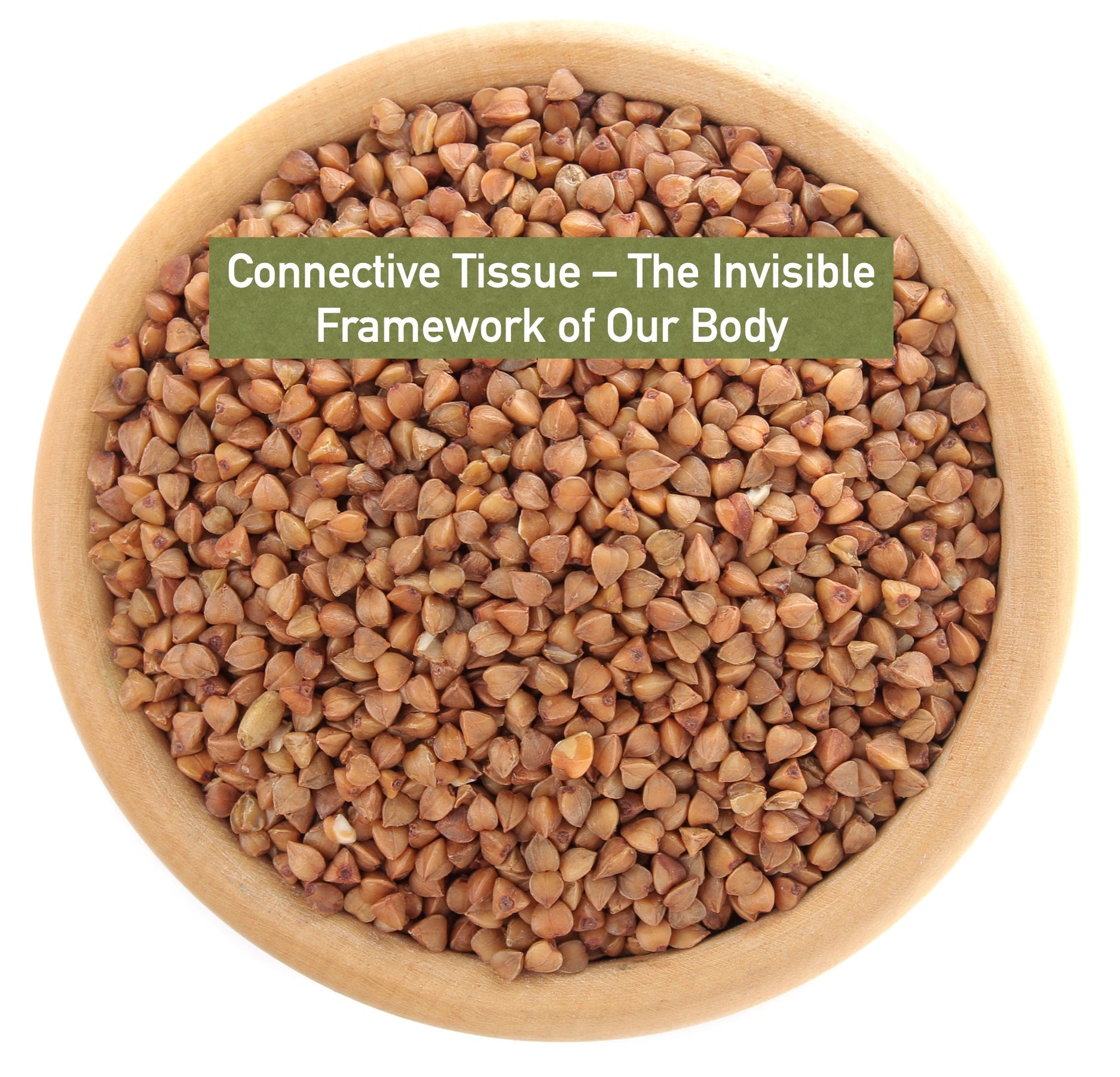
Connective Tissue – The Invisible Framework of Our Body
Connective Tissue – The Invisible Framework of Our Body
We rarely think about the fact that 60–90% of the human body consists not of functional cells but of structural “reinforcement.” Bones, cartilage, dermis, tendons, muscle fascia, blood vessels, membranes, ligaments, cords, and the extracellular matrix as a whole provide internal organs not only with mechanical support but also with protection, transport (of oxygen, nutrients, and metabolites), and the exchange of chemical signals. All these diverse structures together form connective tissue, which modern medicine regards as a unified system.
The framework, strength, and elasticity of connective tissue—and its ability to withstand external mechanical stress without damage—are ensured by structural proteins: collagen and elastin. Their role in maintaining smooth, elastic skin is widely discussed, but their “invisible” functions are just as vital: regulating the ability of blood vessels to constrict and dilate, preserving joint flexibility, accelerating wound healing—in short, supporting not only outward appearance but also the body’s true vitality and youthfulness.
Copper plays a key role in the synthesis of collagen and elastin. This essential trace element is a cofactor for enzymes responsible for forming these proteins. For example, lysyl oxidase, the enzyme that catalyzes the cross-linking of collagen and elastin, requires copper to function. Without adequate copper, the synthesis of structural proteins is impaired, leading to weakened connective tissue and a higher risk of injury.
In addition, copper contributes to the activity of antioxidant enzymes such as superoxide dismutase, which neutralize free radicals and protect cells from ultraviolet radiation and other damage. Free-radical damage is now recognized as one of the most significant drivers of age-related changes. Copper is also essential for the proper functioning of the nervous and immune systems and plays a role in energy metabolism.
Although the human body requires only a small amount of copper (about 1 mg per day), its intake must be consistent. Copper metabolism is closely linked to that of zinc and vitamin C, so doctors recommend monitoring levels of all three and replenishing them when necessary. Interestingly, diets high in sweet fruits (where sugars contain about 20% fructose), red meat, or grain products rich in phytates (natural compounds that protect seeds from premature sprouting) significantly increase the body’s demand for copper.
Consequences of Copper Deficiency for Connective Tissue
A lack of copper in the diet can negatively affect connective tissue in the following ways:
- Weakness and fragility of bones: Reduced collagen and elastin make bones more prone to fractures.
- Joint problems: Cartilage wear can lead to pain and inflammation (arthritis, osteoarthritis).
- Slow wound healing.
- Cardiovascular diseases: Alterations in connective tissue contribute to atherosclerosis and other cardiovascular conditions.
A safe and reliable additional source of copper can be dietary supplements based on copper-rich plants—for example, Copper Plus (Sanatur, Germany). This supplement contains organic buckwheat sprouts, which provide copper in a bioavailable form, along with acacia fiber, a natural prebiotic that enhances absorption. A single capsule of Copper Plusdelivers 1 mg of pure, easily digestible copper compounds.

Buy Copper Plus, CONNECTIVE TISSUE